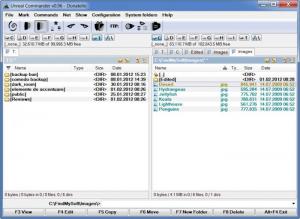

On restarting ThumbsPlus, the thumbnails should reappear.In the new record, change the value to the noted value, preceded by a #. Open the VolumeReal table, and copy and paste a record.Then open the TD4 database in MS Access.Take a note of the serial number, which should be a string of numbers and possibly letters (my guess it is a hexadecimal number). In ThumbsPlus right click on the root of the drive (P) and open the Properties.If this arises, the procedure for adding the new physical volume to the “solution” is:

To help identify this, we configured ThumbsPlus to open at a specific folder, where it will be immediately obvious to the user if thumbnails have apparently become un-catalogued. If they are, then this solution will break down temporarily. We do not know at present whether other physical volumes are present. It is import to remove any thumbnails and paths that are associated with volumes other than the one chosen. The “1” value in the first volume was an arbitrary choice of one of the existing volumes. The presents the two different Volume.Label values as the same volume ID=1, which fools ThumbsPlus into seeing the two physical volumes as one database volume again. SELECT 1 AS idVol, VolumeReal.vtype, rialno, VolumeReal.maxcomplen, VolumeReal.vchar, VolumeReal.filesystem, VolumeReal.label, name, VolumeReal.alias We then renamed the table to, and create a query called Volume with this SQL: This resulted in two records in the table in the ThumbsPlus database. We developed an interim workaround as follows.įirst we scanned at least one thumbnail on each of the machines that we new were seeing a different physical volume (once the problem had been identified). But in our case this was not going to be possible within useful timescales. This should have no effect on other systems, which cannot be relying on the volume labels at present (because they are empty). For example “BorsetshireCC_Data” or something. The best solution would probably be for IT to assign consistent volume labels to the various physical volumes that make up each logical volume, so they all appear the same to ThumbsPlus. Files may even go from being catalogued to un-catalogued and back again during the same session. The symptom is that files that have been catalogued will appear as thumbnails to one user, and un-catalogued files to another (white with red cross).
THUMBSPLUS 10 SERIAL NUMBER SERIAL NUMBER
When the label is blank, it uses a version of the volume serial number as a label. The absence of matching labels on the physical volumes making up one logical volume causes ThumbsPlus not to consider them the same volume, as it uses the label to match database volumes to physical (or rather logical) volumes. In this case the label of the physical DFS drive is 439, but on the physical volumes we were working with it was blank. The volume label (or absence thereof) can be checked on the General tab of the properties: We can confirmed the use of DFS by viewing the properties of the network drive – there is a DFS tab, as shown below: We discovered that different machines were seeing different underlying physical volumes as the same logical volume, and that these DFS volumes had not been given volume labels. The better solution is probably for IT to label all DFS volumes consistently, as explained below, though this is only a hypothesis not proven yet (others may know better?). We found a workaround that appears to solve this, but it is not bombproof, and requires great care. DFS, or Distributed File System, is a Microsoft technology for presenting multiple physical drives as single logical drives, as explained here. While installing LibraryLink and ThumbsPlus with a local authority client yesterday, we hit DFS problems immediately – images un-cataloguing themselves before our eyes, and thumbnails not appearing for users on other machines.


 0 kommentar(er)
0 kommentar(er)
